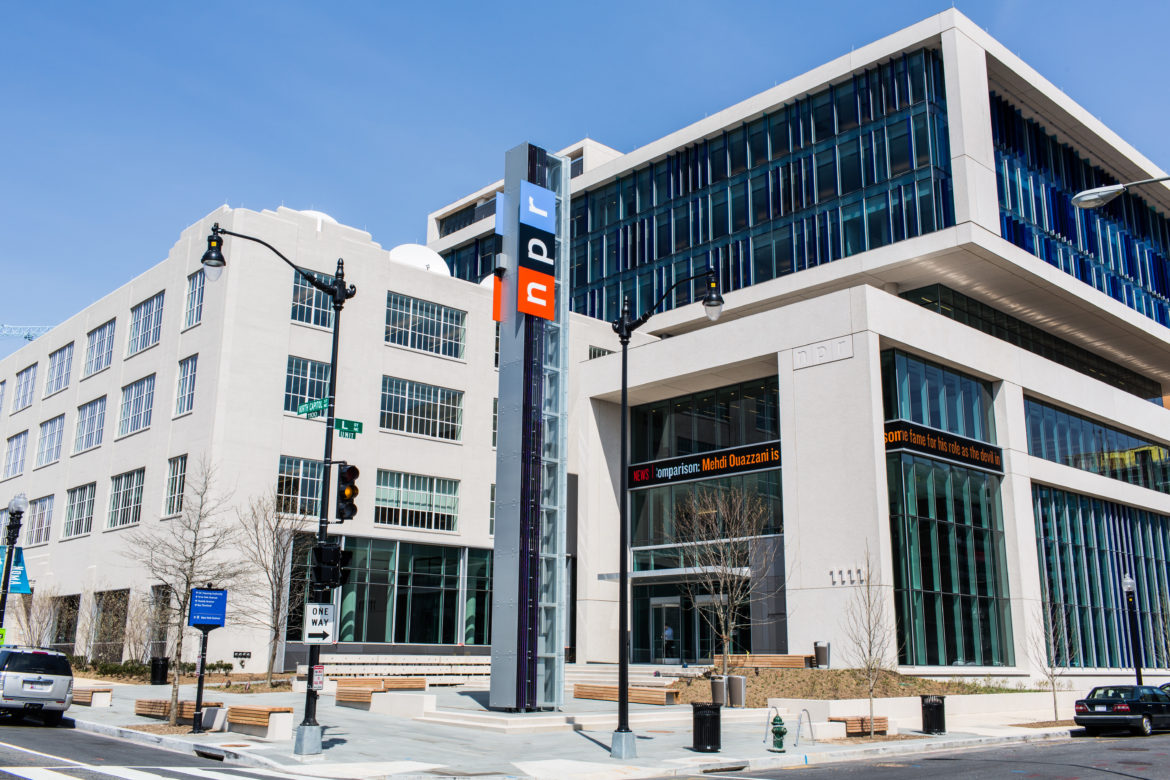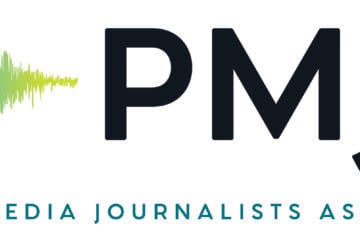NPR budget for new fiscal year aims to avoid layoffs despite deficit

Stephen Voss / NPR
NPR plans to continue implementing cost-saving measures next fiscal year to offset a projected $29 million budget deficit, CFO and Treasurer Deborah Cowan said during a board committee meeting last week.
Cowan presented a breakdown of the FY21 budget that showed anticipated revenues of $250.6 million, down from $253.4 million in FY20 and $258.7 million in FY19.
Before the pandemic disrupted the economy, NPR expected revenues for the current fiscal year to reach $267 million, which was 5% more than NPR’s revised projections for the fiscal year that closes Sept. 30.
NPR’s $240.9 million expense budget for FY21 assumes about $25 million in savings from the budget cuts. But in NPR’s “key financial metric,” operating cash flow, the organization is anticipating a $4.1 million deficit in FY21, Cowan said. That projection takes into account such costs as debt service and capital expenditures.
The FY21 budget, approved last week by the board of directors, assumes a moderate recession. During her Sept. 10 presentation to the board’s finance committee, Cowan said NPR has contingency plans if the economy worsens or takes longer than expected to recover. In that scenario, NPR anticipates a $41 million deficit, Cowan said.
That’s near the upper end of what NPR projected when the finance team began forecasting the FY21 budget, Cowan said. In April, NPR projected a deficit in the range of $30 million to $43 million in FY21; about six months later, those estimates are “not moving a lot,” she said.
“We are going to be prudent and … continue to closely monitor all sorts of leading indicators to early warn us if that stress-case situation of $41 million is materializing,” Cowan said. “And we’ll quickly pivot and course-correct if need be.”
For the current fiscal year, NPR implemented a series of budget cuts to manage revenue shortfalls caused by the pandemic. It paused matching contributions to employee retirement accounts and cut pay, among other measures. But it did not lay off staff. Likewise, layoffs aren’t anticipated in the FY21 budget, Cowan said.
“We were able to adhere to one of our key principles, and that was to preserve as many jobs as possible,” she said.
However, the budget has not been aligned with the FY21–23 strategic plan, which management will present to the board in November, Cowan said.
Approval of the strategic plan “may or may not call for reprioritization … moving around of resources, and may or may not … lead to a handful or very limited amount of layoffs to make sure that we have resources in the right places to successfully execute our plan,” Cowan said.
Richard Harris, an NPR correspondent and steward for the SAG-AFTRA union, told Current in a Sept. 9 email that management agreed not to reduce the workforce for financial reasons “as long as NPR’s projections are on the less dire side. More severe losses would necessitate a discussion of more severe measures, which could include job losses.”
But additional pay reductions will take effect with a decision to extend the one-week furloughs of this fiscal year. In FY21, employees will be furloughed for two weeks. Staffers asked management to provide alternatives to furloughs, including the option to work part-time temporarily or to take sabbaticals with continued medical coverage, Cowan said. NPR will not provide annual salary increases in the upcoming fiscal year, she said.
A sharp drop in corporate sponsorships — NPR’s largest source of revenue — is one of the financial reversals that have shaped NPR’s budget planning. NPR had seen especially strong growth in podcast sponsorships, but corporate underwriting overall took a hit of roughly $15 million from FY19-FY20, Cowan said. She expects additional declines in the coming fiscal year.
“The radio component of sponsorships has fallen way off over the last 10 years,” Cowan said. “And while our podcasting business continues to be strong … it’s just not large enough to offset the decline that we continue to see in revenue.”
Before the pandemic, NPR anticipated a $2 million increase in revenue from station dues and fees, Cowan said. But NPR halted those hikes to provide dues relief to member stations. Stations that were to see reductions in their NPR fees will still realize savings of up to 3%. As a result, NPR’s revenues from station dues and fees will drop by about $1 million in the coming fiscal year, Cowan said.
Revenue from gifts and grants is expected to fall in the next year after an uptick in FY20.
“We tend to see that in the year of a downturn,” when donors step up their giving, Cowan said. “But in year two, that sort of evaporates and doesn’t reoccur. And we’re seeing that.”
Cowan said she’s hopeful that a collaborative fundraising project between NPR and stations can help bring in revenue beyond what’s budgeted. NPR has projected $33.4 million in revenue from gifts and grants, down from $36.6 million this fiscal year.
NPR received $3.5 million in additional support from its foundation, which provided a 1% increase in its annual distribution because of the pandemic.
NPR plans FY21 capital expenditures to upgrade studio, IT and broadcast equipment in NPR’s New York bureau. Some of the equipment is “at extreme risk of failure given its age,” Cowan said.
The upgrade will not add to NPR’s deficit or budget-cutting measures because the organization financed the project by restructuring its debts at lower interest rates, Cowan said.






